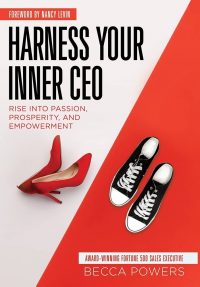
Ms. Powers brings to the subject matter a flair for weaving stories, wisdom, and practicality into a formidable lesson plan for life. Her chapter exercises in particular are well-grounded, easily understood and executed, and relevant. Her teaching voice is unvarnished and direct without being off-putting and she is personally transparent and open without being mawkish. She shares personal insights into herself, life struggles, and course mis-directions in a way that builds credibility with readers, brings them into the conversation, and makes them trust her words and guidance. It is a style that makes the reader yearn for more.
The book is distinguished as well by its sheer intelligence, driven by a steady stream of deep thought and well-considered ideas and observations that give the content instant credibility. It is evident that the author has spent considerable time looking boldly in the mirror, dissecting all she has endured in her life, searching for and finding meaning, small and momentous, each step of the way, and devising effective ways to present what she has learned to captivate a wide berth of readers. The book contains something of value for everyone.
The one drawback is how the book struggles to strike a balance between memoir and coaching work. Yes, both dimensions are essential working in tandem. The stories bring home the lessons. They bestow credibility on the author while giving readers myriad windows into their own lives so they can learn from what the author has to offer. The two cannot be effective without the other. But the book sometimes is preoccupied with the author’s life story, and when that happens, it becomes bloated with excessive biographical details that do not serve the narrative, causing it to wander off course. It’s as if the author first started writing a memoir, changed her mind midstream, recalibrated in favor of a teaching work, and forget to trim the unnecessary personal details. The autobiographical content, while integral to overall purpose, thus often dominants the text rather than function in service of the life coaching. As a result, the book is longer than necessary for a work of its kind.
Still, many readers will enjoy the biographical tidbits, even if they don’t serve the teaching narrative consistently. They provide a basis to establish the author as role model, particularly for women. And, the writing is well-crafted, clear and cogent, and, importantly, the memoir diversions don’t dilute the considerable coaching power of the book too much. The bottom line is that it will be hard to read this book without getting personally challenged to assess how well you operate your life and where changes can and ought to be made.